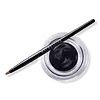What's inside
What's inside
 Key Ingredients
Key Ingredients

No key ingredients
 Concerns
Concerns

 Ingredients Side-by-side
Ingredients Side-by-side

Water
Skin ConditioningStyrene/Acrylates/Ammonium Methacrylate Copolymer
Polysorbate 20
EmulsifyingEthylhexyl Palmitate
EmollientPEG-40 Hydrogenated Castor Oil
EmulsifyingXanthan Gum
EmulsifyingBenzyl Alcohol
PerfumingMethylchloroisothiazolinone
PreservativeMethylisothiazolinone
PreservativeCI 77266
Cosmetic ColorantIron Oxides
CI 77891
Cosmetic ColorantCI 77742
Cosmetic ColorantCI 77007
Cosmetic ColorantCI 77289
Cosmetic ColorantCI 19140
Cosmetic ColorantCI 77510
Cosmetic ColorantCI 42090
Cosmetic ColorantCI 16035
Cosmetic ColorantWater, Styrene/Acrylates/Ammonium Methacrylate Copolymer, Polysorbate 20, Ethylhexyl Palmitate, PEG-40 Hydrogenated Castor Oil, Xanthan Gum, Benzyl Alcohol, Methylchloroisothiazolinone, Methylisothiazolinone, CI 77266, Iron Oxides, CI 77891, CI 77742, CI 77007, CI 77289, CI 19140, CI 77510, CI 42090, CI 16035
Cyclopentasiloxane
EmollientPolypropylsilsesquioxane
Ceresin
Emulsion StabilisingIsododecane
EmollientCyclohexasiloxane
EmollientCaprylyl Methicone
Skin ConditioningSynthetic Fluorphlogopite
Silica Silylate
EmollientDisteardimonium Hectorite
StabilisingDisodium Stearoyl Glutamate
CleansingPropylene Carbonate
SolventCandelilla Cera
EmollientCaprylyl Glycol
EmollientAluminum Hydroxide
EmollientCalcium Sodium Borosilicate
Calcium Aluminum Borosilicate
Silica
AbrasiveTin Oxide
AbrasiveCI 77491
Cosmetic ColorantCI 77492
Cosmetic ColorantCI 77499
Cosmetic ColorantMica
Cosmetic ColorantCI 77891
Cosmetic ColorantCI 77007
Cosmetic ColorantCI 77510
Cosmetic ColorantCI 77288
Cosmetic ColorantCI 77289
Cosmetic ColorantCI 77742
Cosmetic ColorantCI 42090
Cosmetic ColorantCI 19140
Cosmetic ColorantCyclopentasiloxane, Polypropylsilsesquioxane, Ceresin, Isododecane, Cyclohexasiloxane, Caprylyl Methicone, Synthetic Fluorphlogopite, Silica Silylate, Disteardimonium Hectorite, Disodium Stearoyl Glutamate, Propylene Carbonate, Candelilla Cera, Caprylyl Glycol, Aluminum Hydroxide, Calcium Sodium Borosilicate, Calcium Aluminum Borosilicate, Silica, Tin Oxide, CI 77491, CI 77492, CI 77499, Mica, CI 77891, CI 77007, CI 77510, CI 77288, CI 77289, CI 77742, CI 42090, CI 19140
Ingredients Explained
These ingredients are found in both products.
Ingredients higher up in an ingredient list are typically present in a larger amount.
CI 19140 is also known as Tartrazine. Tartrazine is a synthetic dye used in cosmetics, foods, and medicine to add a yellow color.
Tartrazine is created from petroleum and is water-soluble.
Some people may experience allergies from this dye, especially asthmatics and those with an aspirin intolerance.
Learn more about CI 19140Ci 42090 is a synthetic dye created from petroleum. It is used to give a bright blue color to cosmetics, medicine, and food.
This pigment is called Ultramarine blue lazurite. It gives a saturated blue color, but can be used to create other colors as well.
According to the manufacturer, it is usually made from kaolin, sodium sulfate, sodium carbonate, sulfur, and charcoal.
We don't have a description for CI 77289 yet.
This ingredient is used to impart a blue color. It is not water-soluble.
It goes by two different names:
1. Ferric Ferrocyanide: a synthetic dark blue pigment
2. Ferric Ammonium Ferrocyanide: a synthetic blue pigment, also called Prussian blue
In the EU, both of these colors must be labeled as 'CI 77510'.
Learn more about CI 77510This ingredient is used to add a violet color to cosmetics.
It is created by reacting phosphoric acid, ammonium dihydrogen orthophosphate, and manganese dioxide.
Ci 77891 is a white pigment from Titanium dioxide. It is naturally found in minerals such as rutile and ilmenite.
It's main function is to add a white color to cosmetics. It can also be mixed with other colors to create different shades.
Ci 77891 is commonly found in sunscreens due to its ability to block UV rays.
Learn more about CI 77891